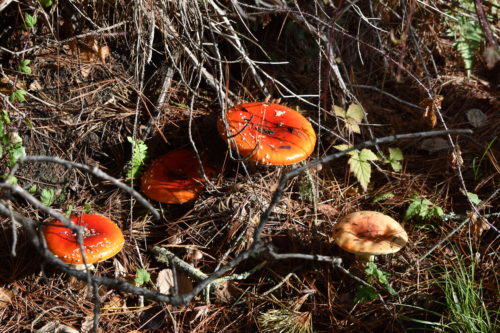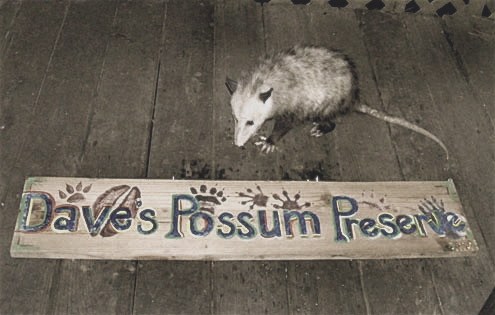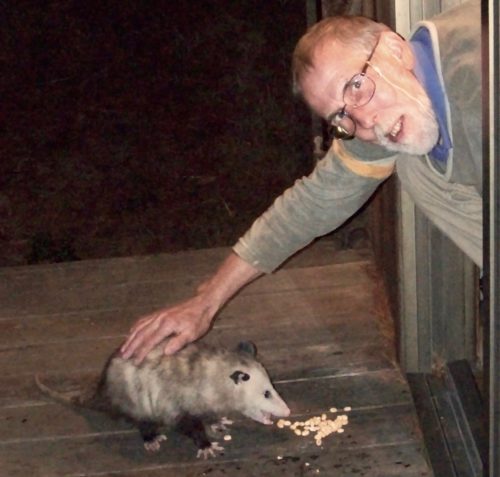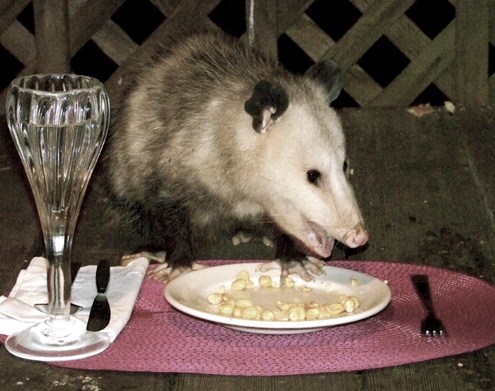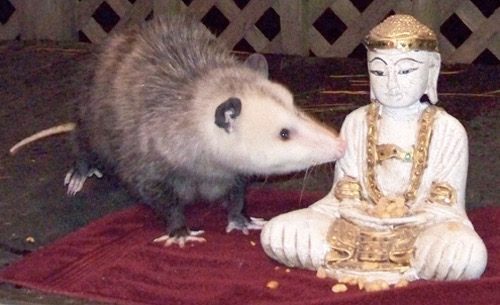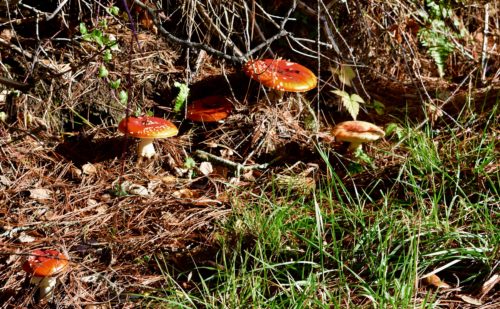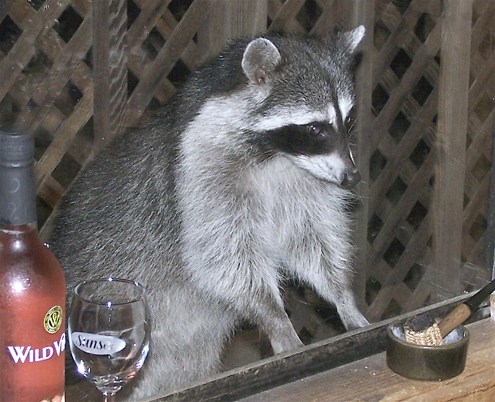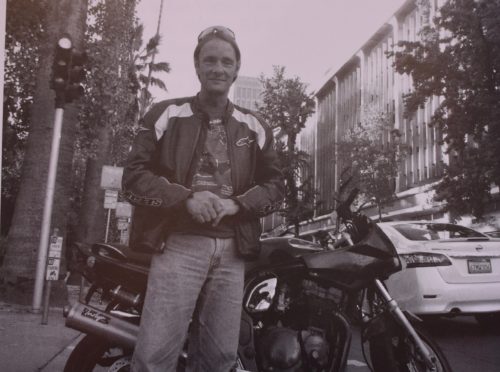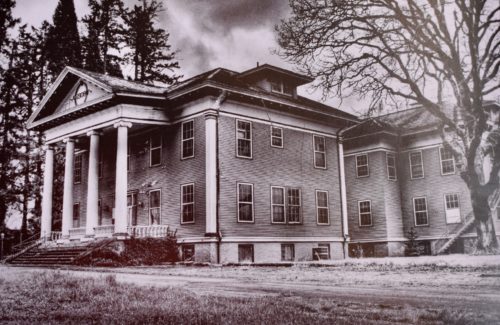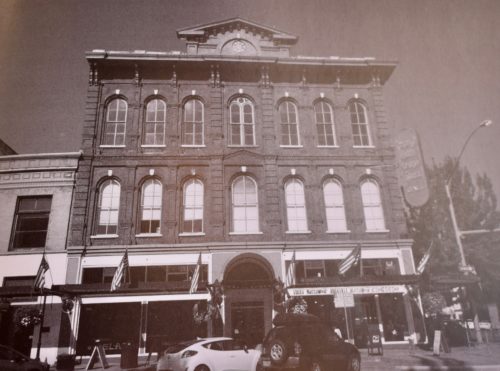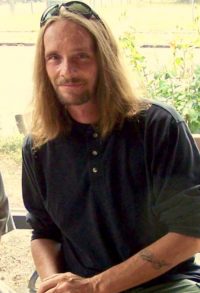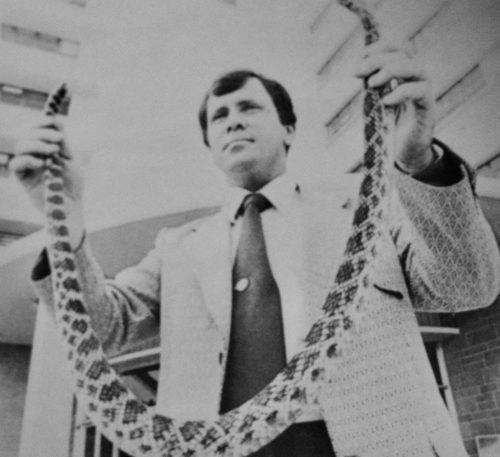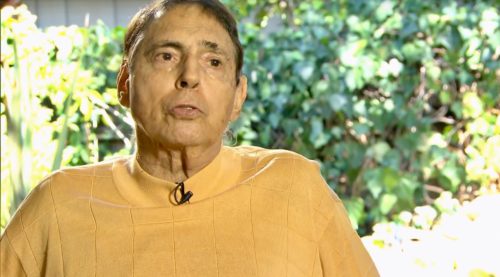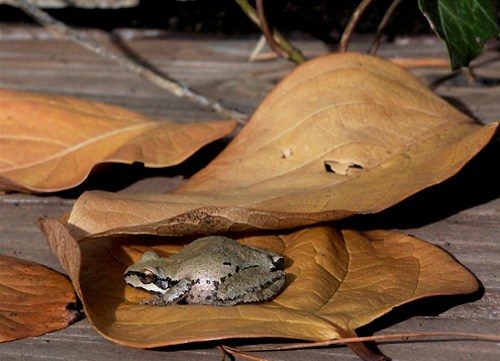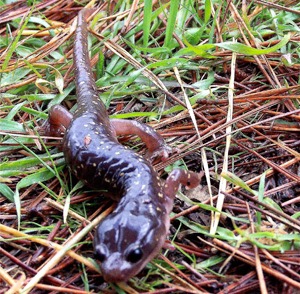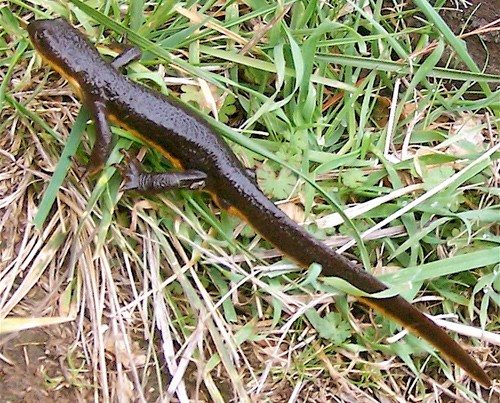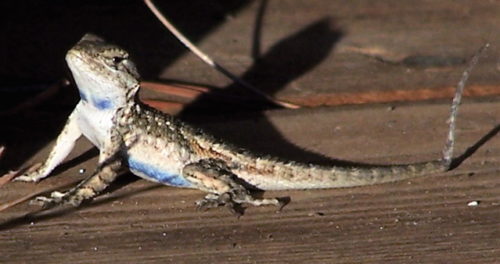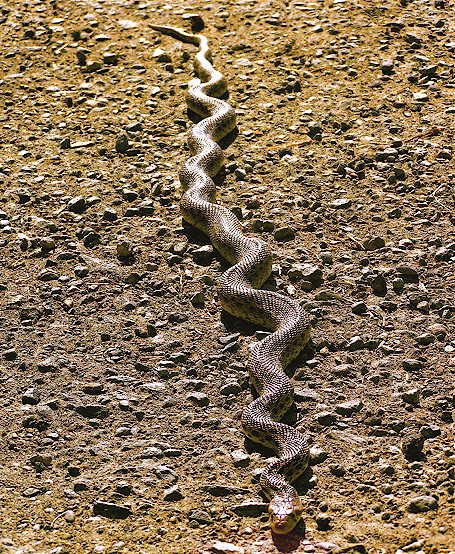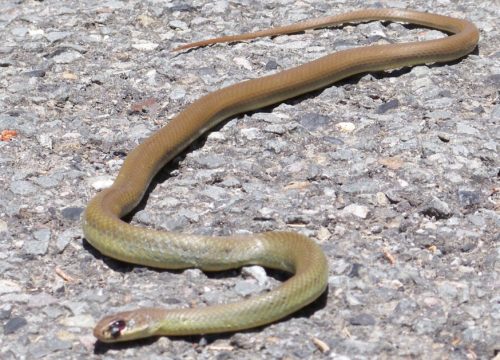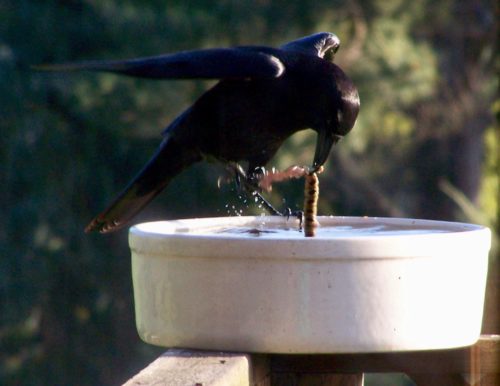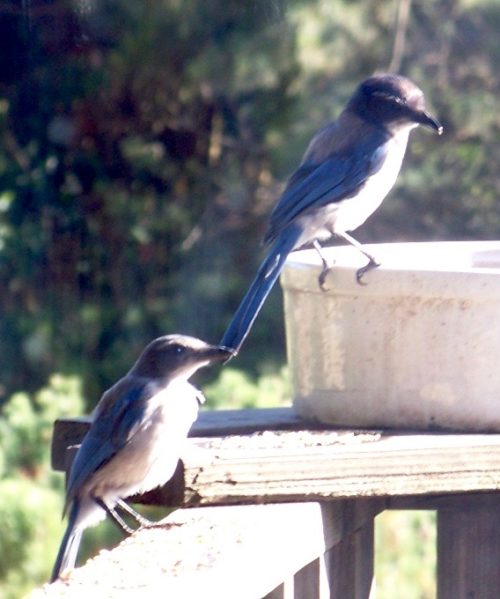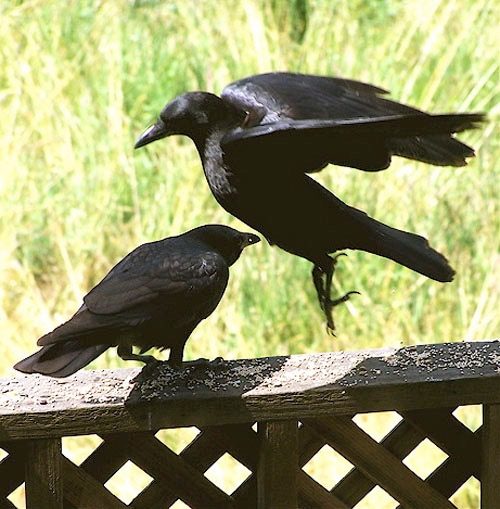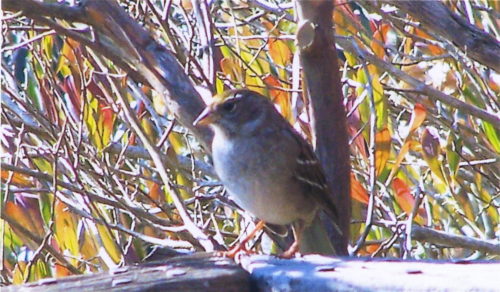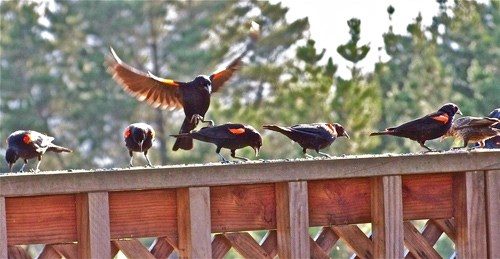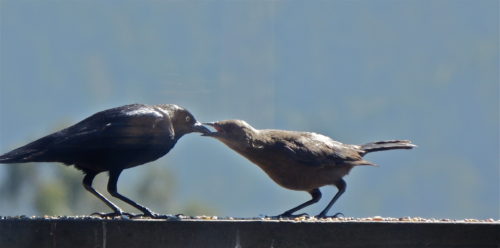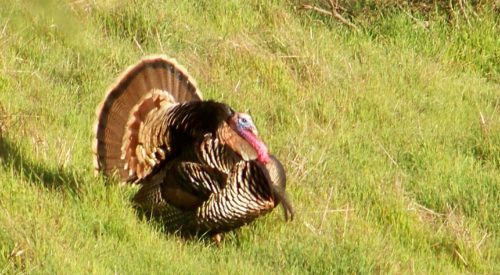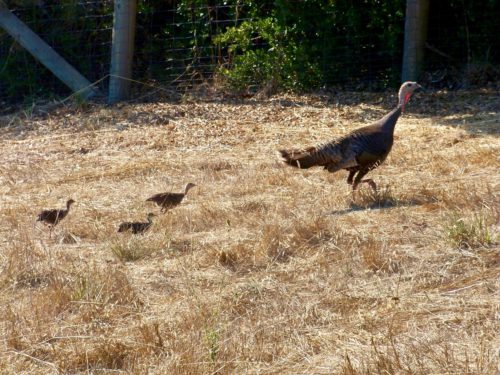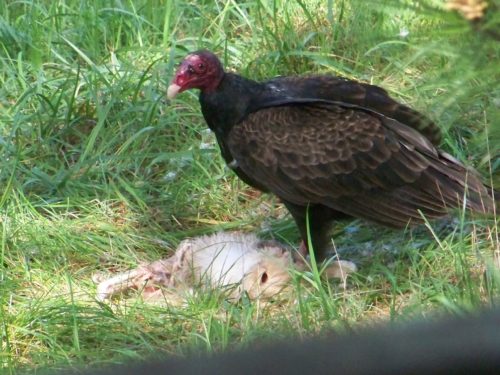Caveat lectorem: When readers submit comments, they are asked if they want to receive an email alert with a link to new postings on this blog. A number of people have said they do. Thank you. The link is created the moment a posting goes online. Readers who find their way here through that link can see an updated version by simply clicking on the headline above the posting.

Los Angeles policeman Richard Grotsley shows the 4.5-foot rattlesnake that the Synanon cult, then based in Marshall, used in its attempt to murder attorney Paul Morantz in October 1978. Two members planted the snake with its warning rattles cut off in Morantz’s mailbox. The snake bit the attorney and likely would have killed him were it not for a swift response from paramedics. (United Press International photo)
NBC Sports Bay Area next week will air a documentary titled Split End: the Curious Case of Warren Wells. It should be of special interest here. Wells was an All-Pro wide receiver who played four seasons for the Oakland Raiders. After alcoholism led to his receiving two drunk-driving convictions and an assault conviction, a judge in 1971 ordered him to enter Synanon in lieu of going to jail. Wells spent only six months in the cult, but he never recovered from having his spirit broken there and was unable to play professional football again. Wells, who died last month at the age of 76, was interviewed for the documentary. In it, he is clearly confused at times as a result of serious dementia.
The showing will be at 8:30 p.m. Thursday, Jan. 24.

Were it not for his legal problems and time in Synanon, Wells might have been one of the greatest wide receivers in history. In 1969, for example, he led the American Football League in yards received (1,260), yards per catch (26.8), and touchdowns (14).

Synanon founder Charles Dederich
Charles Dederich, a recovering alcoholic, started Synanon in 1958 in a rented storefront in Santa Monica, touting it as a rehabilitation organization for drug addicts; however, it soon turned into a highly profitable corporation which avoided taxation by calling itself a religion.
In 1964, Synanon began buying its three properties in Marshall. Those three are now the state’s Marconi Conference Center overlooking Tomales Bay plus the S-2 Ranch and the Walker Creek Environmental Ed Center, both on the Marshall-Petaluma Road. At various times Synanon also owned properties in Santa Monica, Oakland, Badger and Visalia (both in Tulare County), and Lake Havasu (in Arizona).
Members lived at Synanon where no alcohol or drugs were available and Dederich could direct their lives. When they recovered from their addictions, members were often convinced not to leave but to remain as employees. In addition, more and more non-addict “squares” began moving into Synanon for the lifestyle, often cajoled into turning over their houses, bank accounts, and cars. Synanon justified this with a promise to take care of them for the rest of their lives. Many members became low-paid salesmen for Synanon’s highly profitable Advertising Gifts And Premiums business.
ADGAP was a distributor of promotional souvenirs to merchants such as car dealers. The souvenirs were often keychains, cocktail glasses, or other knickknacks inscribed with the merchants’ names. Synanon’s sales pitch was essentially: ‘You’re going to buy this stuff anyway, and if you buy it from us, your money will help cure drug addicts.’ The ploy was so successful that ADGAP eventually grossed $11 million a year.
Meanwhile Dederich was becoming increasingly authoritarian and demanding. Synanon already prevented members from having much contact with family members on the outside. To insure that members were totally committed to Synanon as it had evolved, Dederich launched what amounted to a series of conformity tests. In 1975, all members, male and female, were required to shave their heads. In early 1977, Dederich coerced men who had been in Synanon five years or longer to have vasectomies and pregnant women to get abortions. Later that same year, virtually all couples, married or not, were required to “change partners.” Members who objected to any of this had to get out, leaving the more zealous members as the core of the cult.
Critics, including lawyers suing the cult, were considered “enemies” and now could be marked for violence. Initially violence had been forbidden by Synanon, but Dederich soon dropped the ban.

Atty. Paul Morantz being interviewed for ‘Split End.’
After atty. Morantz won a $300,000 judgment against the cult for a Southern California woman who had been brainwashed and wrongfully imprisoned in Marshall, Dederich went on a rant recorded by Synanon itself. On the recording, which was seized by police, Dederich can be heard growling: “I’m quite willing to break some lawyer’s legs, and then tell him I’m going to break your wife’s legs, and then we are going to cut your kid’s ear off. Try me. This is only a sample, you son of a bitch. And that’s the end of your lawyer. And that’s the end of him and all his friends. It’s a very satisfactory and humane way of transmitting information.”

Yours truly being interviewed in the documentary.
In 1978 with Synanon violence becoming increasingly common in West Marin and elsewhere, editorials in The Point Reyes Light, which I published at the time, began criticizing law enforcement’s failure to see the pattern. Each incident was treated as unrelated to all the others until ……… the rattlesnake in Morantz’s mailbox. That crime was so bizarre that California’s criminal justice system was finally forced to pay more attention to the group.
Dederich and his two snake handlers were soon arrested and in court made no claim of innocence but instead pled no contest to charges of conspiracy to commit murder. The two were sentenced to a year in jail. After he complained of frail health, Dederich was not jailed but sentenced to five years probation and ordered to stay away from Synanon. In fact, he lived 17 more years, dying at the age of 83 in 1997.
By then, Synanon was no more. In 1991, the IRS had taken away the cult’s tax-exempt status, which forced it to disband. After viewers of Split End, see the damage Synanon did to Wells, most will agree that Synanon should have been disbanded long before then. I’d recommend the documentary even if I didn’t have a cameo in it.
